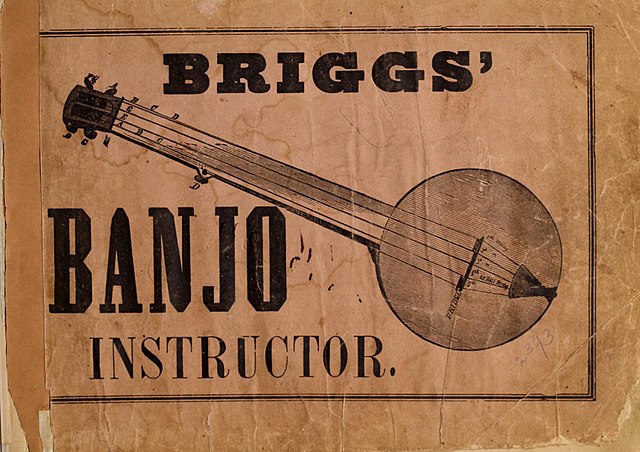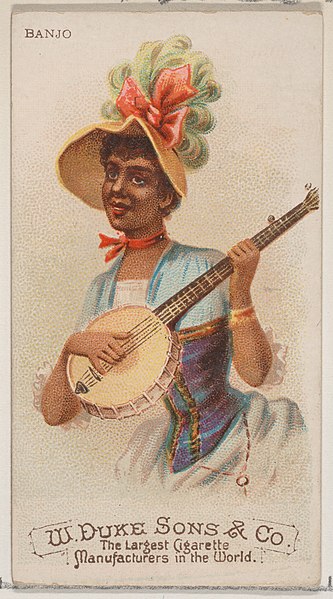A capo is a device a musician uses on the neck of a stringed instrument to transpose and shorten the playable length of the strings—hence raising the pitch. It is a common tool for players of guitars, mandolins, mandolas, banjos, ukuleles and bouzoukis. The word derives from the Italian capotasto, which means the nut of a stringed instrument. The earliest known use of capotasto is by Giovanni Battista Doni who, in his Annotazioni of 1640, uses it to describe the nut of a viola da gamba. The first patented capo was designed by James Ashborn of Wolcottville, Connecticut year 1850.
Spring clamp capo
A guitar capo with a lever-operated over-centre locking action clamp
Demonstrating the peg removal feature on an Adagio guitar capo
A guitar being played with a spring clamp capo
The banjo is a stringed instrument with a thin membrane stretched over a frame or cavity to form a resonator. The membrane is typically circular, in modern forms usually made of plastic, originally of animal skin. Early forms of the instrument were fashioned by African Americans and had African antecedents. In the 19th century, interest in the instrument was spread across the United States and United Kingdom by traveling shows of the 19th-century minstrel show fad, followed by mass-production and mail-order sales, including instruction method books. The inexpensive or home-made banjo remained part of rural folk culture, but 5-string and 4-string banjos also became popular for home parlor music entertainment, college music clubs, and early 20th century jazz bands. By the early 21st century, the banjo was most frequently associated with folk, bluegrass and country music, but was also used in some rock, pop and even hip-hop music. Among rock bands, the Eagles, Led Zeppelin, and the Grateful Dead have used the five-string banjo in some of their songs. Some famous pickers of the banjo are Ralph Stanley and Earl Scruggs.

The Old Plantation, c. 1785–1795, the earliest known American painting to picture a banjo-like instrument, which shows a four-string instrument with its 4th (thumb) string shorter than the others; thought to depict a plantation in Beaufort County, South Carolina
Sheet music cover for "Dandy Jim from Caroline", featuring Dan Emmett (center) and the other Virginia Minstrels, c. 1844
The Briggs' Banjo Instructor was the first method for the banjo. It taught the stroke style and had notated music. Publication date - 1855
Banjo, from the Musical Instruments series (N82) for Duke brand cigarettes, 1888








